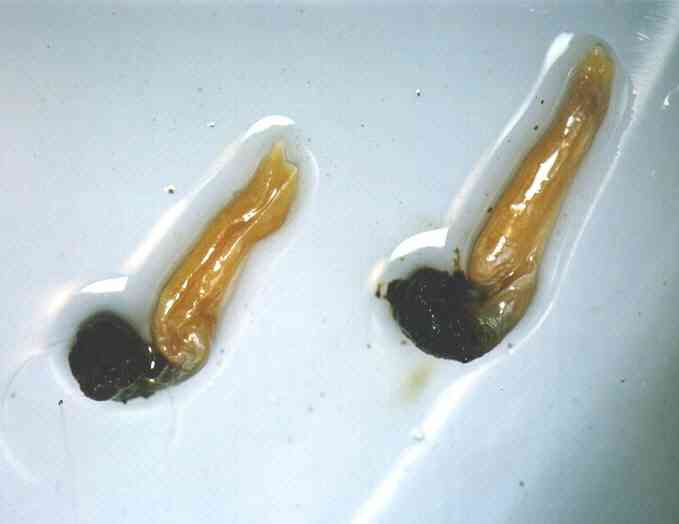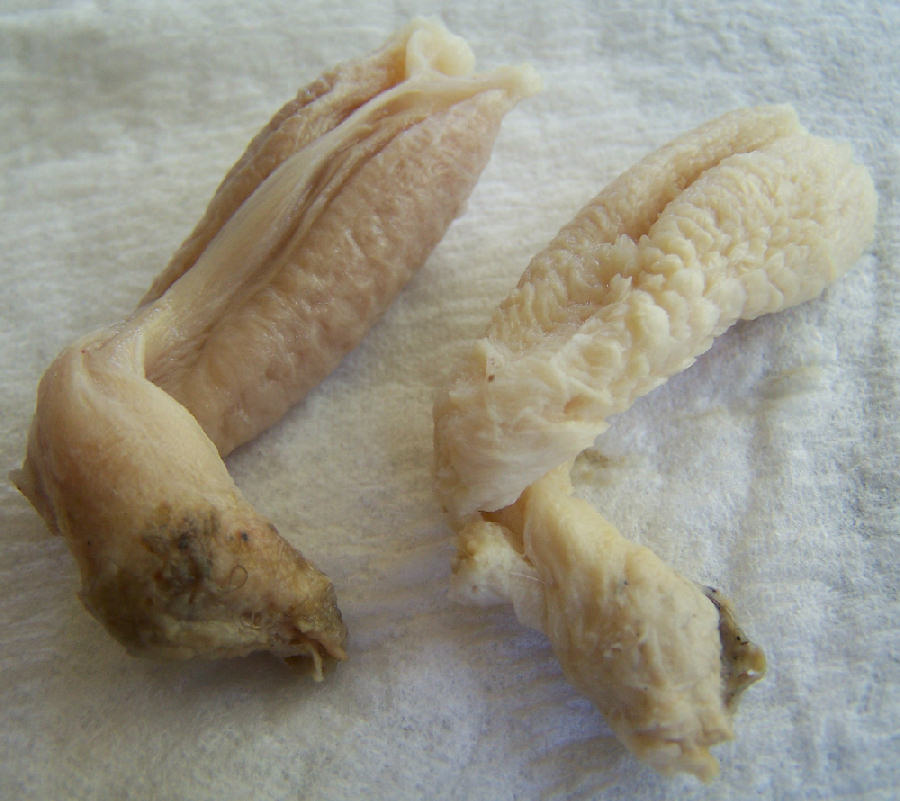
Melissa
Kaplan's
Herp Care Collection
Last updated
January 1, 2014
Seminal (Hemipenal) Plugs and Seminal Exudates
©1994, 2002 Melissa Kaplan
What
Seminal Plugs Are Not
Seminal plugs are not the same things as the plugs in
femoral pores. Femoral pore plugs are normal and you
need do nothing to or about them unless an abscess
form under or around one. In some iguanid and agamid species,
the waxy plugs grow longer during breeding season. As
the lizard walks, dragging his thighs and the plugs across
surfaces, the scent-laden femoral pore plugs are worn
down as the male marks his territory.
Seminal plugs, on the other hand, develop inside the inverted hemipenes and should be removed if they are not naturally expelled during defecation. You'll know when it's time to do something about them when they become clearly visible, sticking out through the venter folds.
Seminal
Exudates
The
sexually mature males of many iguanid, agamid, and some
scincid species exude a white sticky rubbery H-shaped
substance - you may find it dried on surfaces to a kind
of brittle amber color. This is normal and needs no intervention.
This exudate is formed in the hemipenes. It may be extruded
when the lizard defecates, or on its own. When it is being
forced out, the lizard will evert his hemipenes to free
the matter, and may rub the hemipenes on the surface the
lizard is standing on to get the exudate off.
What does need intervention as soon as they are seen are retained seminal plugs.
Once they grow in length as high up as the vent, the tops of the plugs begin to trap feces when the lizard poops. In time, you will see two pieces of hard smooth poop in the lizard's vent. You can try to remove them yourself. First, soak the lizard in a warm bath. Then using gloved hands or a couple of layers of facial tissue, gently rock one of the plugs from side to side as you gently pull. The plug should pop out. A bit of the hemipene may evert a bit with the plug but the hemipene should retract back into the tail. Repeat with the second plug, if there is one.
When I first wrote this article, there weren't many vets who were familiar with either the exudates or with the seminal plugs. While lack of knowledge about the former is not a problem, it is in the case of the latter - I've heard of vets wanting to amputate the hemipenes thinking there was a problem! This illustrates why it is important to go to a vet who has not only experience working with reptiles but to keeps up with the reptile veterinary literature and research.
|
Big
Lizards, Big Stuff Right: These are plugs from Mikey, my 7 year old Cyclura. They measure 2.5 inches long, 0.5 inches thick, and .75 inches wide. No wonder he gets a bit cranky as they build up in his hemipenes! |
Related Articles

